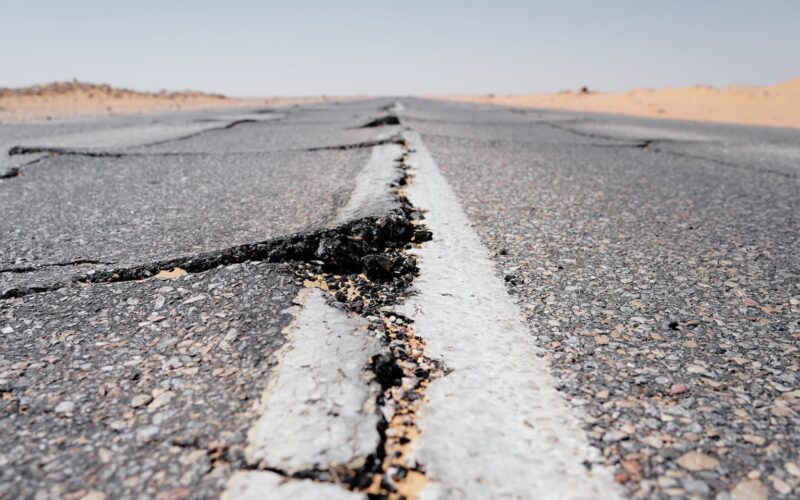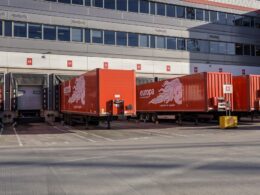Logistics is a field that requires a lot of planning and careful manoeuvring of resources. Unfortunately, as we’ve seen several times over the last few years, this means that logistics are very susceptible to major disruptions and disasters. As such, knowing what to do during such emergencies becomes paramount for weathering them. For this, we’ve prepared a guide on the logistics challenges after earthquakes: strategies for recovery.
Lack of proper communication
The first challenge is very difficult to overcome: lack of proper communication. Establishing connections with authorities and quickly securing aid is a priority in an area struck by an earthquake. However, individual businesses are not exactly the priority. It is a move made to get help rather than re-establish business communications. As such, the area can become cut off from the rest of the logistics network. This makes properly functioning impossible from both ends. The wider network does not have access to the area, and the impacted area cannot start the recovery process until communications open again. The best way to approach this issue is incremental: it is unlikely for all communication to fail. So, the priority would be to focus on broader instructions you can get through. At the same time, smart logistics management becomes paramount on both sides.
Lack of required infrastructure
Even if you don’t bother to learn about logistics, it is evident that infrastructure is vital for the industry. A lot of optimal logistics practices rely on maximizing the efficiency of routes and delivery times. However, in an area impacted by a strong earthquake, it is very unlikely that the roads would remain in good condition. This presents one of the worst logistics challenges after earthquakes since even if you want to pull resources from other regions, the process is dreadfully wasteful and inefficient. Unfortunately, all you can do in order to recover is work around these limitations. The smartest way to do that would be to organize more frequent yet smaller shipments. A truck fleet would almost assuredly not be able to travel effectively. However, a single truck or even a delivery van likely could. This would limit the speed of recovery but guarantee it continues instead of halting.
Sudden flagging of the logistics support network
As the experts from getmovedtoday.com like to point out, you can easily underestimate how much support is required to keep a moving or logistics business running. You need warehousing providers, you occasionally need shipping companies, and you need experts who can maintain your truck fleet and keep it running properly. And, of course, you need a whole lot of employees and in-house experts, too. And a disaster such as an earthquake robs you of most of these necessary elements. You would likely be short-staffed, too, since many of your employees would naturally not prioritize going to work over salvaging their private lives. This means your best approach would be limiting your operations to what you can achieve in-house and encouraging those who can come to work through bonuses and perhaps even care packages you can get into the area from outside.
An obvious shift in demand
Part of the trouble with logistics challenges after earthquakes is rather simple: people need the basics in large quantities. However, how many businesses stress over stocking necessities? Not many since the assumption being that they are relatively easy to restock. Besides, even though the demand for them is mostly stable, there is not much profit. At the same time, the stock that the businesses have in the area is almost entirely worthless. No one is going to look for luxury or expensive goods in an area recovering from an earthquake. At the very least, the solution to this is simple, if annoying, once the previous three problems aren’t an issue. The current stock can be shifted to other cities, where it might find the proper customers. Meanwhile, the acquisition of necessities is a priority, and their prices are potentially lowered.
Warehousing challenges post-earthquake
Of course, once you have more desirable stock, you face another one of the logistics challenges: properly storing it. There are two reasons why you might not be able to secure a satisfying storage facility. First, of course, is that few things operate properly in a city hit by an earthquake. You won’t be able to calmly negotiate your way into getting a new warehouse. And second is the fact that your existing facilities may have gotten damaged. No matter how well you apply best inventory management practices, they all hinge on having a proper facility first. And any damage to a warehouse can have disastrous effects on its contents. So, if your warehouse did get damaged, you’d be stuck trying to safeguard your goods while also being unable to secure a replacement facility. Unfortunately, all you can do is section off any damaged warehouse sections.
Potential damage to inventory
The final of the logistics challenges after earthquakes is somewhat obvious: damaged inventory. Particularly annoying is the fact that it isn’t just your inventory in the area that’s a concern. Of course, damage does happen, especially if you have tall shelving within your storage facility. Or if the entire facility becomes a victim of a strong earthquake. Far more annoying is the struggle to keep your inventory safe afterward and to get it where it needs to go. As we stated already, a lack of warehouse space availability makes things difficult. Add to that the difficulty of getting new inventory, and you will need to ration what you have very carefully.
A step-by-step improvement strategy
As you can tell from what our guide on logistics challenges after earthquakes and strategies for recovery reveals, the process of getting things back to normal won’t be quick. You will need to devote many resources to the region if you want it to operate normally in a decent timeframe, which unfortunately means operating at a loss for a while. Of course, the industry and economy of earthquake-struck areas tend to bounce back quickly once the recovery hits a certain point, so you will eventually be able to resume operations and turn a profit instead.













